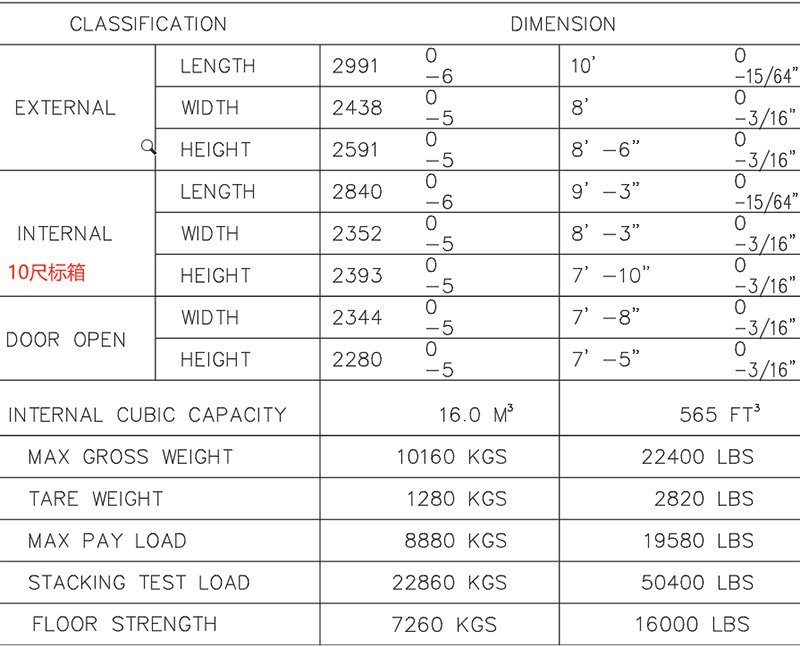The 10-foot container is a remarkable asset in the world of storage and transportation, offering unique advantages due to its size and design. This article will provide a detailed exploration of its various aspects.
1. Specifications
External Dimensions: Measuring 10 feet in length (3.048 meters), 8 feet in width (2.438 meters), and typically 8 feet 6 inches in height (2.591 meters). Its compact length makes it suitable for locations with limited space or for specific applications that don't require a larger container.
Internal Dimensions: The internal space is approximately 9 feet 6 inches long (2.9 meters), 7 feet 8 inches wide (2.34 meters), and 7 feet 10 inches high (2.39 meters). Despite its smaller size compared to larger containers, it still provides a useful area for storing and transporting a variety of items.
Weight Capacity: It usually has a payload capacity ranging from 5,000 to 10,000 kilograms, depending on its construction and intended use. This allows for the transportation and storage of moderately heavy loads.
Door Dimensions: Generally, it has a single door at one end. The door width is around 7 feet (2.134 meters) and the height is about 6 feet 8 inches (2.032 meters), facilitating the loading and unloading of goods.
2. Materials and Construction
Frame: Constructed from high-strength steel, the frame forms the backbone of the container. The steel is carefully selected and treated to resist corrosion, ensuring durability and structural integrity. It is engineered to withstand the rigors of transportation, including stacking, lifting, and being exposed to different weather conditions.
Wall and Roof Panels: The walls and roof are made of corrugated steel sheets. These sheets not only provide strength but also offer protection against the elements such as rain, wind, and sunlight. The corrugated design enhances the rigidity of the container, enabling it to bear external pressures and impacts.
Floor: The floor is typically made of hardwood or a combination of plywood and steel. Hardwood floors are renowned for their ability to support weight and resist wear and tear. They are often treated to prevent moisture damage and the growth of pests. The surface may also have an anti-slip coating for safety during loading and unloading operations.
Sealing and Insulation: To ensure the protection of the contents, proper sealing is provided around the doors and joints. Some 10-foot containers may also have insulation installed, especially if they are used for storing temperature-sensitive items. Insulation materials like fiberglass or foam can help maintain a stable internal temperature.
3. Usage Scenarios
On-Site Storage: Ideal for small construction sites or workshops where space is limited. It can be used to store tools, equipment, and building materials, keeping them secure and protected from the elements. It can also serve as a storage unit for small businesses, storing inventory or office supplies.
Residential Storage: Homeowners can use a 10-foot container for additional storage space. It can hold seasonal items like Christmas decorations, sports equipment, or gardening tools. It can also be used for storing personal belongings during a home renovation or relocation.
Retail and Pop-Up Stores: Can be converted into a small retail kiosk or a pop-up store. With some customization, it can display and sell a variety of products such as clothing, accessories, or food items. Its compact size makes it easy to set up in busy shopping areas, festivals, or markets.
Transportation of Small Loads: Suitable for transporting small quantities of goods. For example, it can be used by small manufacturers to ship their products to customers or distributors. It is also convenient for transporting personal belongings over short distances, such as when moving between apartments or houses.





